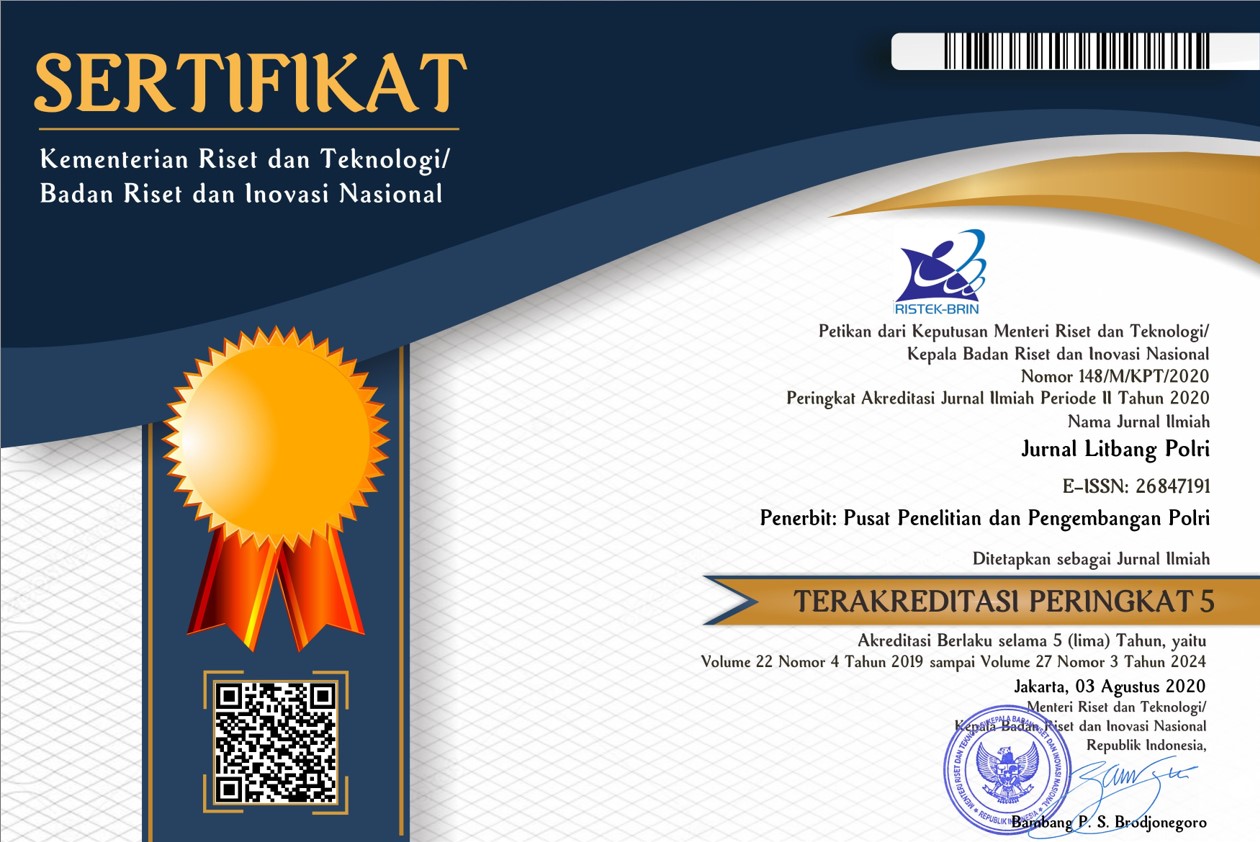Applicability Predictive Policing in Indonesia Police Agency
Abstract
This paper explores the application of predictive policing in Indonesia, to overcome challenges such as large geographic areas, uneven population distribution, and insufficient police numbers to handle a large population. Predictive policing involves collecting and analyzing data to anticipate and prevent crime. The study identified issues such as disproportionate police to population ratios, unequal distribution of society, high crime rates, and low utilization of police resources. Using a qualitative approach, especially realist ethnographic studies and action research, this research aims to assess the feasibility and implementation of predictive policing in Indonesia. By combining an in-depth qualitative approach with an understanding of institutional infrastructure and current technology, this study provides valuable new insights into the implementation of predictive policing in Indonesia. The benefits of this research include theoretical contributions to police science and practical insights for future studies of predictive policing in the police. Analyzing crime data from 2018 to 2020 shows a decline in crime rates nationally, but regional variations. The decision-making bureaucracy in the Indonesian National Police is described by emphasizing a centralized system. This paper explores current applications of predictive policing, and highlights the role of intelligence reports. Despite declining crime rates, the study concludes that predictive policing faces challenges in considering qualitative research and a lack of comprehensive data. This paper calls for future discussions regarding predictive policing, technology integration, and Big Data program development to increase accuracy and effectiveness in Indonesia.
The copyright of articles published in Jurnal Litbang Polri remains with the author. However, by submitting the manuscript and agreeing to its publication, the author grants Jurnal Litbang Polri the first publication right to:
-
Publish the article openly (open access)
-
Distribute, store, and reproduce the article in both print and electronic formats
-
Archive the article in institutional digital repositories, scientific indexing services, and publication databases
Authors retain the right to use their article for personal, academic, or institutional purposes, provided that the original source of publication in Jurnal Litbang Polri is properly cited.


 Jalan Raya Tonjong, Desa Cimanggis, Bojonggede, Kabupaten Bogor.
Jalan Raya Tonjong, Desa Cimanggis, Bojonggede, Kabupaten Bogor. 










